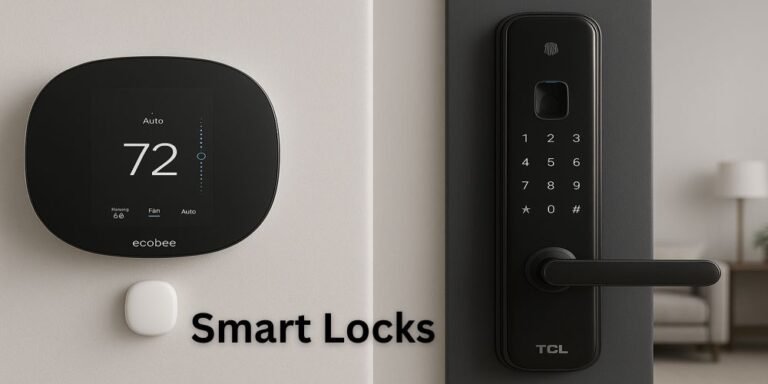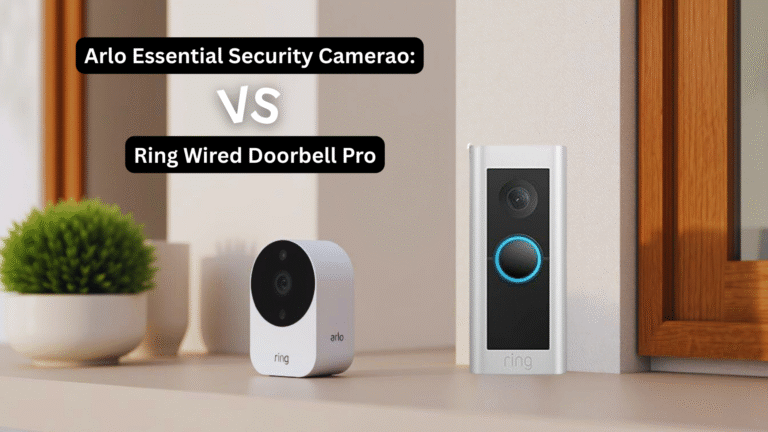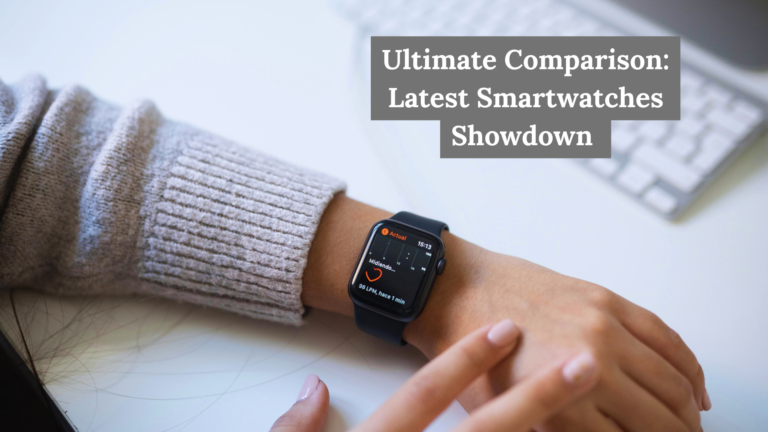Comparing Garmin’s High-End Wearables: Fenix 8 Vs. Forerunner 965 – A Detailed Analysis

Choosing between the Garmin Fenix 8 and Garmin Forerunner 965 can be tough. It’s a big decision, and I’ve taken the time to deeply analyze both options to help you out. This comparison highlights key points like price, features, and battery life.
Keep reading to see which one might be the right fit for you!
Price Comparison
Quick Recommendation
“Check out our quick recommendations for a curated product list, or scroll down to explore more in-depth reviews and details!”
- Rugged Design, Solar Power, and AMOLED Display for Adventures: Fenix 8
- Advanced Training Watch with AMOLED Display and Long Battery Life: Forerunner 965
Comparison Table
| Product Name | Battery Life | Special Features |
|---|---|---|
| Fenix 8 | 16 days |
Built-in LED flashlight, Advanced strength training, Bright, crisp display, Up to 16 days of battery life, Built-in speaker and microphone |
| Forerunner 965 | 22 Amp Hours |
Training Readiness, Full-Color Mapping, Triathlon and Multisport Profiles, Race Adaptive Training Plans, Daily Suggested Workouts, Training Status, Courses with Turn-By-Turn Directions, Sleep Monitoring and Sleep Score, Body Battery™ Energy Monitoring, Women’s Health Tracking, Race Predictor, Wrist-Based Running Dynamics, Wrist-Based Heart Rate, Performance Condition, VO2 Max, Health Snapshot, Cross Training, Wrist-Based Running Power, Built-in Sports Apps |
1. Fenix 8

Rugged Design, Solar Power, and AMOLED Display for Adventures
The Garmin Fenix 8 is packed with features that make it the top choice for outdoor and fitness enthusiasts. Its vibrant AMOLED display offers crisp visuals, but you can pick a tough Sapphire version if durability is key. I love how it lasts up to 16 days on smartwatch mode, which means I don’t have to charge it constantly—perfect for long trips.
Built-in maps and ABC sensors make exploring easy. The dynamic routing kept me on track during hikes, and hands-free calling lets me stay connected while focusing on workouts. Compared to the Forerunner 965, the Fenix 8 feels more versatile with its LED flashlight and rugged design—ideal for adventures!
Pros
- Long battery life—lasts up to 16 days in smartwatch mode and 92 hours with GPS using solar charging.
- AMOLED display provides bright, clear visuals—even in sunlight.
- Durable build with scratch-resistant options like Sapphire and Solar Sapphire versions.
- Built-in speaker and mic allow for hands-free calls directly from the watch.
- Advanced navigation tools with TopoActive maps and ABC sensors keep you on track outdoors.
- Dynamic round-trip routing helps plan routes easily, offering turn-by-turn directions
Cons
- Expensive price tag – The Fenix 8 may not fit every budget, especially for casual users who don’t need all its features.
- Short battery life with AMOLED – While stunning, the AMOLED display can drain the battery quicker than other versions.
- Complex setup – Its advanced features and customization options might overwhelm new users or non-tech-savvy individuals.
The Garmin Fenix 8 is perfect for adventurers, athletes, and tech-savvy explorers who demand durability, advanced GPS features, and vibrant displays—upgrade your journey today.
2. Forerunner 965

Advanced Training Watch with AMOLED Display and Long Battery Life
The Garmin Forerunner 965 is my top pick for runners and triathletes. Its colorful AMOLED screen and lightweight titanium bezel make it sleek yet durable. I love how it tracks advanced running stats like cadence, stride length, and even wrist-based power—no extra sensors needed! The multi-band GNSS ensures accurate GPS tracking, even in tricky areas like dense forests or busy city streets.
What sets the Forerunner 965 apart is its focus on recovery and readiness. Every morning, I get a report showing sleep quality, HRV status, and training insights. This helps me plan workouts smarter—whether I need rest or can push harder. Plus, the battery life is incredible: up to 23 days in smartwatch mode! Compared to other high-end options like the Fenix series, this watch feels lighter on my wrist but equally powerful for performance tracking.
I also enjoy using built-in maps during trail runs or exploring new routes—it’s easy to navigate without pulling out my phone. Switch between sports effortlessly with customizable profiles for activities like swimruns or triathlons. It adapts daily workout suggestions based on how well you’re recovering after each session—a feature that keeps me consistent while avoiding burnout. Overall, Garmin nailed it with the Forerunner 965; it’s both practical and packed with cutting-edge features tailored for serious athletes!
Pros
- Bright AMOLED display makes it easy to see your stats and maps, even in sunlight.
- Tracks advanced running metrics like cadence, stride length, and power for better insights.
- Multi-band GNSS with SatIQ improves GPS accuracy even in tough environments.
- Morning report shows sleep quality, recovery status, training readiness, and weather updates at a glance.
- Training status helps you know if you’re pushing too hard or improving steadily.
- Supports multiple sports with built-in profiles for triathlons, swimruns, and more—you can customize too!
Cons
- Limited affordability – The Forerunner 965 is priced high, which might not fit everyone’s budget.
- Complex features – Advanced metrics and training data may confuse beginners or casual users.
- Short battery in GPS mode – While decent, 31 hours of GPS usage might fall short for ultra-endurance athletes.
The Forerunner 965 is perfect for driven athletes who crave precise performance metrics, advanced training tools, and a sleek design—ideal for runners comparing Garmin’s high-end wearables like the rugged Fenix 8. Take your training further—get yours today!
Design and Features Comparison

The Fenix 8 and Forerunner 965 stand out with their unique builds, advanced tracking tools, and smart extras—let’s explore which suits your needs best.
Design Differences: [Fenix 8 Vs. Forerunner 965] has a more premium metal design
Fenix 8 feels sturdy with its premium metal design. It includes a metal plate, which adds durability and style. I noticed it fits well for multi-sport use. Its materials increase the price but make it worth considering for outdoor workouts.
Forerunner 965 lacks this metallic look and build. It opts for lighter materials instead of metal finishes. While both are fitness trackers, Fenix 8 clearly stands out in terms of toughness and aesthetics.
Activity Tracking: Similar features for both wearables
Both wearables support running, cycling, swimming, and triathlons. I find their tracking very accurate for steps, calories burned, and physical exercise.
Each device tracks sleep patterns and resting heart rate nonstop. Both use a heart rate monitor, accelerometer, gyroscope, barometric sensor, and GPS for precision workouts.
Battery Life: [Fenix 8 Vs. Forerunner 965] has longer battery life
The Fenix 8 offers longer battery life. It lasts nearly 26 hours during a marathon, making it great for long usage. Its solar edition boosts performance with improved solar panels.
This makes the Fenix 8 stand out as a reliable smartwatch.
The Forerunner 965 falls short in this area but still performs well. Yet, compared to the Fenix 8, its battery power is less impressive for extended activities. The Fenix’s strong solar battery gives it an edge over other wearables, especially outdoors or during heavy use!
Additional Features: [Fenix 8 Vs. Forerunner 965] has diving mode, speaker, and microphone
Fenix 8 has a diving mode, which works like a mini dive computer. I find this feature helpful for tracking air pressure and monitoring depth while underwater. It’s designed well for activities like wakesurfing or kiteboarding too.
It also includes both a speaker and microphone, making phone calls easy without an iPhone or Android device in hand. This setup pairs with smartphones using Bluetooth Smart, so there’s no need to carry extra gadgets.
The convenience of these tools saves time during workouts and daily tasks alike.
Potential Features for Forerunner 965
The Forerunner 965 could gain features like advanced navigation tools or a built-in compass to match other premium devices. Adding these updates would improve daily use and fitness tracking for its users.
Possible features from [Fenix 8 Vs. Forerunner 965] that could be added to Forerunner 965 to bridge the gap
I see room to add wireless charging. It would be easier than using a charging pad or cables. Many smartphones and devices, like some tablets and smartwatches, already have this tech.
It could make daily use better for users.
Adding Gorilla Glass for stronger screens makes sense. Devices like iPhones and Android gadgets rely on it for durability. A compass upgrade or ECG monitoring might improve navigation and health tracking too.
These features fit well with global positioning systems already in place on the watch.
Benefits for users of having these added features.
New features, like diving mode in the Forerunner 965, open up more options for water sports lovers. A speaker and microphone make hands-free calls easy during workouts or busy moments.
With longer battery life, users can rely on their devices for marathons or long hikes without worry. Detailed running metrics help track VO2 max and improve training plans for serious athletes.
Conclusion
The Fenix 8 and Forerunner 965 both stand out. They each bring strong features to the table, but they serve different needs.
The Fenix 8 costs more, starting around $1,000. Its metal design feels premium in hand. It also adds a speaker and microphone for calls. This watch is best for someone who values style along with performance.
On the other hand, the Forerunner 965 offers great value at about $600 or less on sale. It has similar tracking abilities as the Fenix 8. Plus, it boasts longer battery life and some unique options like diving mode.
I would recommend going with the Fenix 8 if you want high-end materials and advanced extras like phone-call support through your wearable device. Its quality justifies its higher price tag if budget isn’t an issue.
Both watches share strengths in activity tracking and training analysis accuracy but choosing one depends on your priorities—style or savings? You get solid wireless technology features either way!
FAQs
1. What are the key differences between Garmin Fenix 8 and Forerunner 965?
The Fenix 8 is built for rugged outdoor use with advanced features like heart rate monitors, electrocardiogram tracking, and interval training tools. The Forerunner 965 focuses more on lightweight design and performance tracking for runners.
2. Do both wearables support wireless technology?
Yes, both models include wireless technology like Wi-Fi versions, Bluetooth compatibility, and ANT+ connectivity for seamless pairing with Android devices or iPads.
3. Can these devices connect to mobile networks?
Neither the Fenix 8 nor the Forerunner 965 supports direct cellular network connections but can sync through paired smartphones using radio signals or NFC (near-field communication).
4. Are these wearables suitable for monitoring health metrics?
Absolutely! Both offer heartbeat monitoring, electrocardiogram readings, and other tools to track fitness progress during activities like interval training.
5. How does screen resolution compare between the two models?
The Forerunner 965 has a sharper resolution optimized for clarity during movement, while the Fenix 8 balances its display quality with durability for outdoor adventures.







